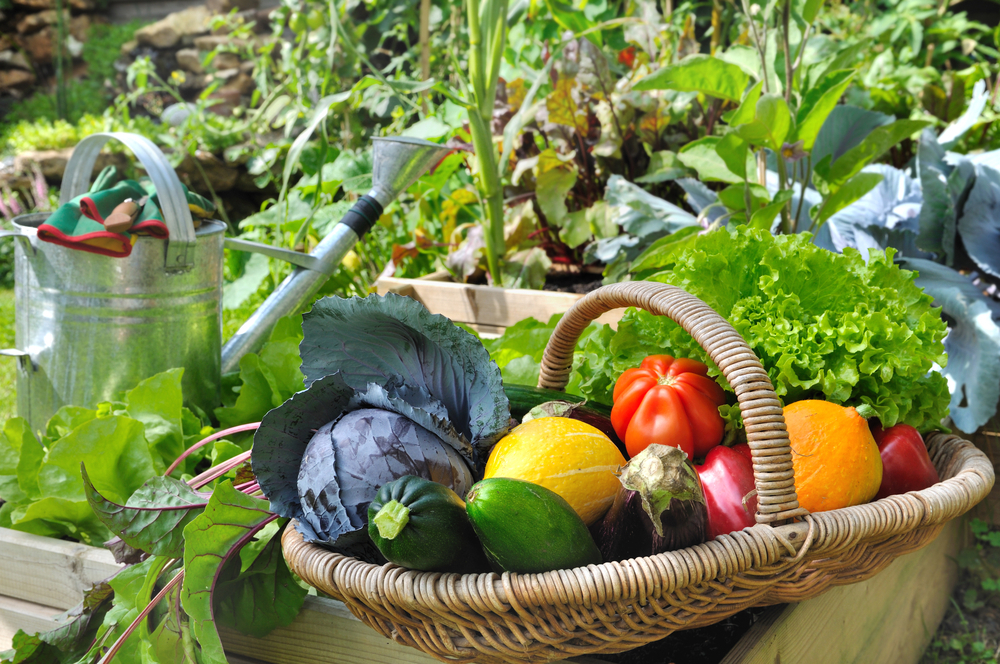
The human desire to grow and harvest our food is motivating homeowners of all ages to place edible gardens at the top of their backyard wish list.
When building a new house with Generation Homes, landscaping is included in the unique, fixed-price guarantee and customers have an option to include fruit and vegetable gardens into their design.
Leading landscapers who advise Generation Homes say edible gardens are becoming a common feature – think evergreen Feijoa hedging which produces stunning red flowers in summer as well as a bounty of fruit in autumn, individual herb gardens and berry plants for the ultimate seasonal harvest.
Raised vegetable planter boxes in particular are proving popular as people get real satisfaction out of growing their own vegetables while also adding another style dimension to the backyard.
Today, fruit and vegetable gardens are a thing of beauty, with lush leaves adding an abundance of colour right down to the designer cabbages.
Recent garden trend reports reveal that DIY food gardeners spend more than their flower gardener counterparts. This is said to be driven by an “increase in healthy obsessions with wellness tied to good nutrition”.
If you’re committed to growing your own food but don’t have the inclination for a traditional vegetable patch, any outdoor living area can be transformed into a successful food garden. Homeowners can use the walls, paving, planter-boxes, containers, pergolas and even water features to support a thriving edible oasis.
Start small
If you want to create your own Garden of Eden, the secret is to start small and consider your planting choices. Planter boxes of different shapes and sizes are great for dividing varieties of vegetables and herbs around the perimeter of your backyard, but if you’re keen for a striking centrepiece try planting a fig tree in a beautiful tub – this will make it more manageable and fruitful.
Colour and contrast
If you want to create a lovely mix of multi-coloured greens, try planting a bountiful garden of red oak lettuce, spinach, kale, rocket and yellow-stalked silverbeet. Herbs can be used to fill spaces or provide boundaries between each type of produce.

Plant perimeters
Parsley can work beautifully as a path edging or when mass-planted. A clever landscaping design trick is to replace some pavers with herbs such as camomile, oregano, basil or thyme for a mini herb garden with minimal fuss.
Blueberry shrubs make an attractive hedge, a great backdrop for vegetables, or a boundary between properties. They thrive in the sun, are very low maintenance and offer a nutritious berry harvest in the summer.
Upright rosemary is the best for cooking and flowers through spring and summer.
Sun-loving climbers
Passionfruit will flourish on a warm and sheltered wall but will require ongoing maintenance and care to control fungus. The common black-skinned variety has the capacity to cover a large area.
Grapevines will need full sunshine, good air circulation, drainage and plenty of liquid feed in early spring.
Kiwifruit grow on vigorous, large-leaved vines that can be highly productive if grown in the right conditions. They are traditionally a warm weather plant however can withstand frosts in winter while they are dormant, but late frosts in spring can damage their tender new shoots.
Citrus fruits
Lemon trees prefer high sun exposure and free-draining soils but don’t tolerate heavy frosts. The stems have no thorns and the tree produces beautiful, fragrant white blossoms.
Tahitian limes will deliver a bounty of juicy fruit for several months and have purple-tipped flowers with an intoxicating scent.

Water plants
To accentuate the beauty of a natural pond or water feature, fill it with waterlilies or watercress. Watercress requires lots of sunlight and should be grown in a warm, sheltered position. Its delicate leaves have a peppery flavour, and are usually eaten fresh and raw in salads or sandwiches.
To find out how Generation Homes can incorporate an edible garden into your new home build, speak with one of our Sales Consultants today.